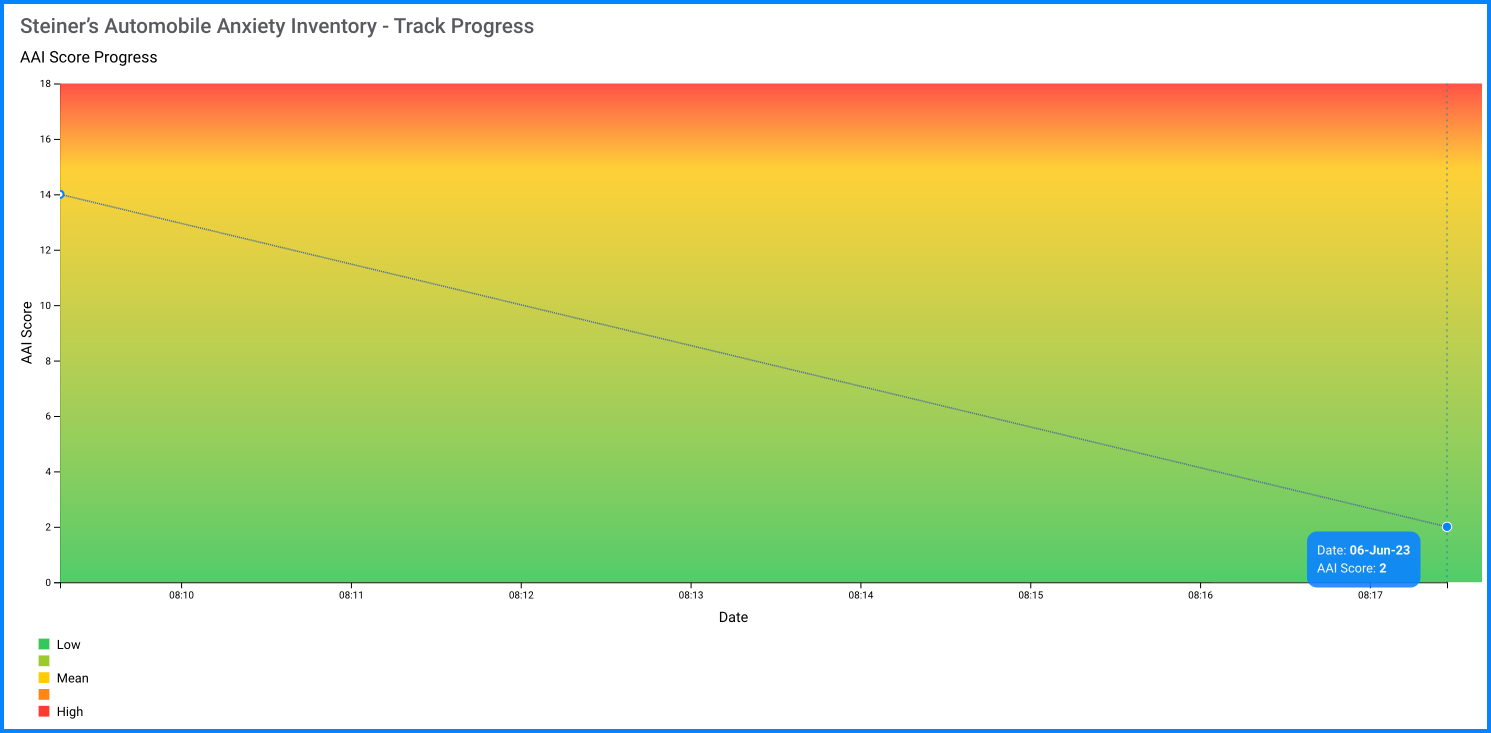Since the questionnaire relies on client self-report, all responses should be verified by the clinician, and a definitive diagnosis is made on clinical grounds taking into account how well the client understood the questionnaire, as well as other relevant information from the client.
Briefly, the Steiner’s AAI is designed for assessments of post-accident amaxaphobia of previously self-confident drivers who were free of excessive anxiety prior to their accident. Its task is to facilitate such assessments, making them more systematic, and providing detailed information for therapists who work with these patients.
The AAI is intended for “mapping” the individual pattern of manifestations of driving anxiety to allow systematic and quantitative routine clinical assessments of each patient. No cutoff score is provided at this time because it is theoretically feasible that a patient endorsing all 18 items might be, in an extreme case, less seriously disabled by amaxophobia than another one who marked only one or a few items with “Yes,” but experiences a more adverse deterioration of the quality of daily life, when the restrictions of travel due to vehicular anxiety interfere in some extreme manner with the occupational activities, self- care activities, and family life of the patient. Thus, the main purpose of Steiner’s AAI in clinical work is to provide descriptive clinical data based on a standardized systematic assessment rather than using a quantitative diagnostic cutoff in individual cases. For example, the psychotherapist may review the patients’ responses to AAI items in the counselling session to inquire about the context and nuances of avoidance of certain driving situations, the limitation in their regular participation in life due to avoidance of driving, and the impact of these factors on self-esteem or self-image. The pre- and post-accident context of the MVA must be also clarified to understand the patient’s experience of the current symptoms.
Some patients find it difficult to describe their MVA related feelings in words without some prompting in a safe therapeutic relationship. Reviewing the AAI responses with the patient in the treatment sessions would facilitate emergence of nuanced information which helps the process of providing instructions for the use of exposure therapy appropriately customized for the individual patient. The nuanced information may also assist the patient in learning more about the underlying limiting cognitions, and later to reflect and evaluate the negative automatic thoughts associated with strong emotions during the cognitive re- appraisal. Briefly, Steiner’s AAI may serve as a tool in therapy of post-MVA patients.




